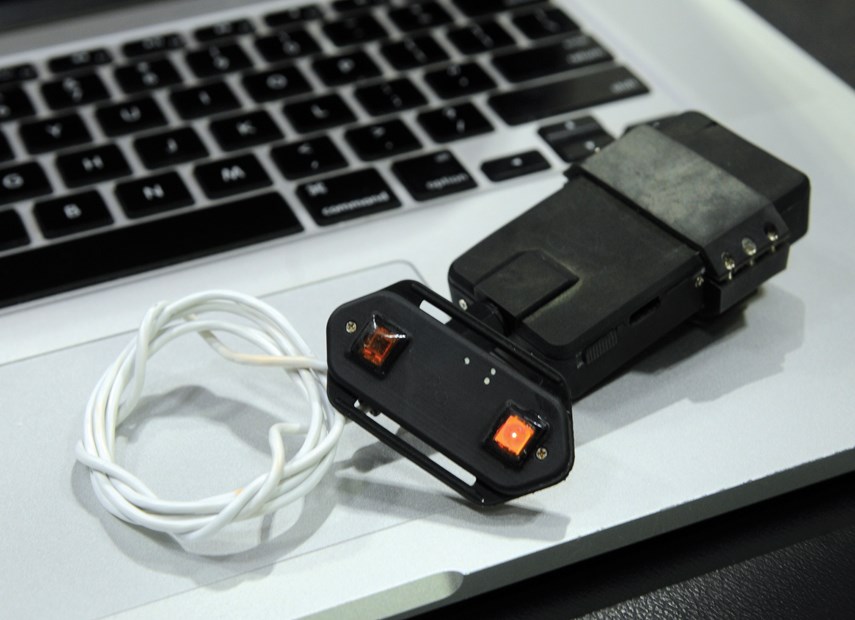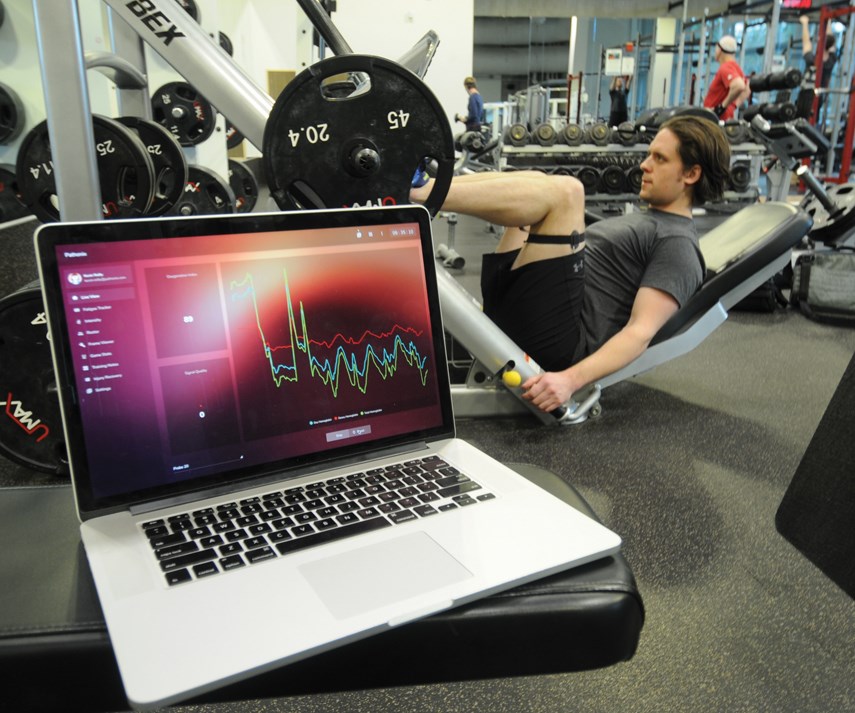Every hockey fan has seen one of those hits: some winger’s drifting through the neutral zone looking every which way but the way he needs to be looking.
Then comes one of those teeth-rattling crunches that upsets nacho bowls and puts a wince on every face in the arena.
And as the guy’s stretched out on the ice like a side of beef the colour commentator wonders aloud how such a smart player could’ve made such a costly mental mistake.
It’s those mental mistakes Kevin Reilly is hoping to help prevent.
Along with fellow engineering PhD Behnam Molavi and sports physician Babak Shadgan, Reilly is behind a pioneering technology that aims to give coaches an inside look at an athlete’s energy levels.
The trio has spearheaded a device, “about the same size as a Band-Aid,” that uses near-infrared spectroscopy to monitor the metabolism of an athlete’s muscles. It’s very similar to the technology hospitals use to record brain activity.
The device feeds information to a laptop or tablet and offers real-time status updates on what’s happening in the body in terms of blood flow and muscle metabolism.
It’s a real-life stamina bar. “Just like what you have in the video games,” Reilly says.
If an athlete has suffered an injured shoulder, the technology can zero in on the affected muscles to let a coach know when someone is pushing too hard.
Pushing athletes too hard can cause obvious problems: turf toe, tennis elbow. But not pushing athletes hard enough has its own risks, particularly if a team isn’t prepared for competition, Reilly explains.
When a competitor gets tired their attention tends to lapse. “That’s when bad things happen.”
However, measuring the metabolism of an athlete’s muscle, “allows a coach to see how much energy that athlete’s burning and how much gas they have left in the tank before they’re fatigued.”
The initial idea came from Shadgan’s work with a wrestler who was experiencing a chronic and puzzling leg pain.
“They were having such a hard time being able to figure out what the problem was,” Reilly recalls.
To help solve the mystery, Shadgan, who has served as president of the United World Wrestling Medical Commission, took Operating Room gear out of the OR to monitor the wrestler’s leg when he was exerting it.
“I immediately saw the potential in it,” Reilly says. “I was absolutely fascinated by what the technology could do.”
Reilly, who grew up on Skyline Drive in what he calls “the nosebleed section of North Vancouver,” immediately thought of sports.
“Before my PhD I was quite the athlete. After my PhD, maybe not so much,” he remarks.
Reilly spent much of his youth swimming ridiculous distances and building mountain bike trails on Mount Fromme. He also went to Balmoral and Carson Graham schools, where he recalls saying: “Awesome, I’m never going to do chemistry again in my life.” (He has since earned a PhD in chemical engineering.)
Equipped with some hardware and an idea, the UBC entrepreneurs decided to see how athletes would take to their device.
After starting with a “big box that goes beep,” the team created a “large and chunky” prototype about the size of a wallet, Reilly says.

“It was wildly entertaining to see people with this thing strapped to them.”
They kept testing and redesigning and shrinking, working with the Burnaby Hockey Academy as well as sport scientists at the University of Northern British Columbia, until the device was small enough to be woven into clothes.
“If it’s not something that a person wants to use then what’s the point of building it?” Reilly asks.
There are other fitness devices on the market, Reilly acknowledges, but not quite like this.
While a step-counter can be handy, it doesn’t discriminate between an Olympic athlete’s 10,000 steps and the 10,000 steps covered by an 80 year old with a walker, he points out.
Instead of an external look at what your body is doing, their device focuses on “how your body is doing,” he says.
The sensors and software can show what’s happening inside different soccer players, ostensibly revealing the different physical demands of each position, Reilly reasons.
For instance, a striker might stop and start, “the equivalent of a drag racer,” Reilly says. Conversely, a midfielder might thrive on efficiency, running for an entire match.
“By being able to see what the demands are on an athlete’s body during the game, the coach can actually start to make decisions around what sort of training they need to do.”
The “best and worst” aspects of the technology are the endless applications, according to Reilly, who notes that to a man with a hammer, all problems look like a nail.
Conceivably firefighters could use the devices with the chief pulling them out if their oxygen levels are too low.
The eventual goal is to sell the device in stores.
“Imagine a pair of Under Armour or Lululemon pants that just knows everything about your body. That’s what we’re going for.”
Their final production prototype is tentatively scheduled to be finished in the fall of 2018.
If it’s a big enough hit, it might just prevent one.



